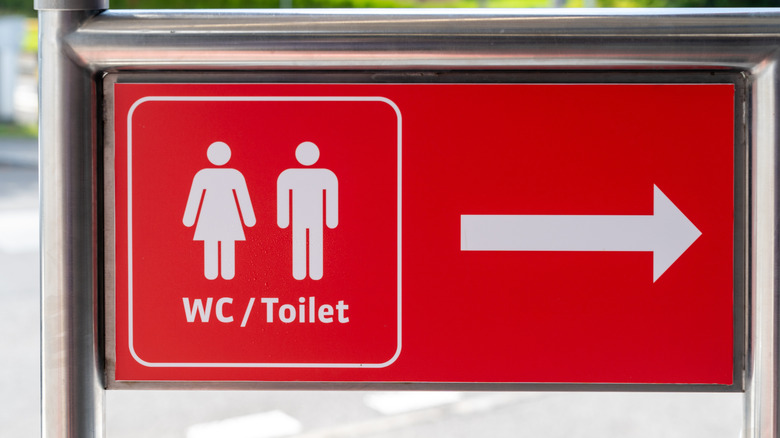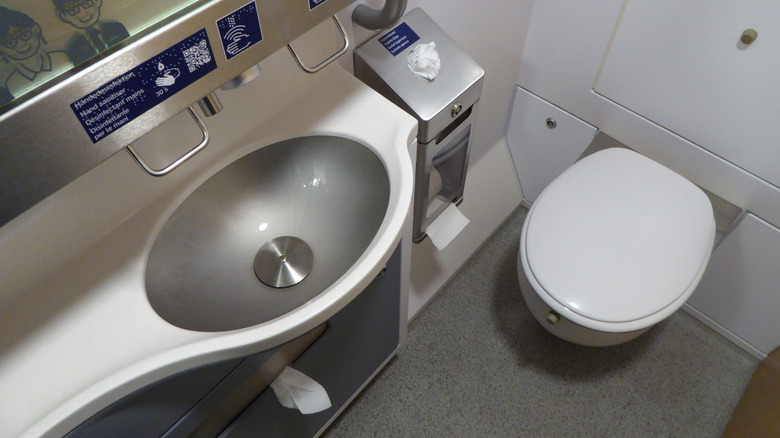Rick Steves Suggests Tourists In Europe Utilize This Little-Known Bathroom Hack To Save Time And Money
Traveling Europe by train? You'll spend plenty of time at train stations, and while using the bathroom on solid ground seems logical, travel expert Rick Steves suggests otherwise. He recommends using the onboard toilets to save both time and money.
This advice might seem counterintuitive. Most of us were raised to use a bathroom before a journey, and naturally apply this thinking at train stations. However, as Steves explains on his website, European train stations often charge for restroom access. Even when entry is free, you may encounter attendants expecting payment for toilet paper or facility maintenance. That's why Steves recommends carrying change for public restrooms in Europe — an increasingly overlooked necessity in cashless societies. Meanwhile, train bathrooms are free and typically at the end of the cars. Station bathrooms, on the other hand, require time to locate — and aren't always in the most obvious place. If you're already on a tight schedule, hunting down toilets could mean missing your connection.
Understanding train etiquette in different countries is as simple as observing others and following their lead. If passengers are speaking quietly, you should too. Bathroom customs, however, are a bit trickier since you can't exactly shadow a local into the loo. Yet understanding these differences matters, especially in confined spaces like trains. So, before hopping aboard, let's take a crash course on using bathrooms on European trains.
Tips for using the bathroom on European trains
When packing for European travels, Rick Steves suggests bringing toilet paper and hand sanitizer. Not all European bathrooms — particularly on trains or in public areas — are well stocked. This is also why he recommends using the train's toilet early on in your journey. The paper supply and cleanliness will only deteriorate with time. But please wait until the train's actually moving, since some older train toilets dump straight onto the tracks.
While train restrooms are generally well-marked and easy to find, you should learn to ask for them in the local lingo. In English, Europeans typically refer to the bathroom as the W.C. (water closet) or simply "toilet." However, you may want to skip the questioning and head straight for the first-class facilities. They're usually held to a higher standard, which is always welcome in the public bathroom department. Although first-class toilets are nicer, Rick Steves feels upgrading your train ticket isn't worth it. Instead, sneak a visit to the facilities before returning to the second-class seat.
European toilets often surprise American tourists with their unique features — or lack thereof. Some Italian toilets don't have seats, a measure that prevents tourists from standing on them and causing damage. And while flushing might seem like a straightforward process, expect the unexpected. As Rick Steves points out, older European toilets may have a pullstring, while modern ones typically offer two buttons: a water-conserving light flush and a more powerful option. But ultimately, what you'll find on European train toilets can vary, so survey your surroundings before settling in.

